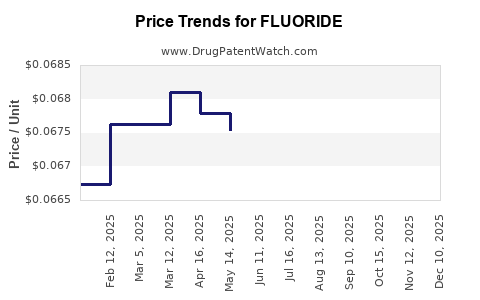Drug Price Trends for FLUORIDE
✉ Email this page to a colleague

Average Pharmacy Cost for FLUORIDE
| Drug Name | NDC | Price/Unit ($) | Unit | Date |
|---|---|---|---|---|
| FLUORIDE 1 MG TABLET CHEWABLE | 75826-0165-20 | 0.06431 | EACH | 2024-11-20 |
| FLUORIDE 0.25 MG TABLET CHEW | 75826-0163-20 | 0.06879 | EACH | 2024-11-20 |
| FLUORIDE 0.5 MG TABLET CHEW | 59088-0105-73 | 0.06654 | EACH | 2024-11-20 |
| >Drug Name | >NDC | >Price/Unit ($) | >Unit | >Date |


